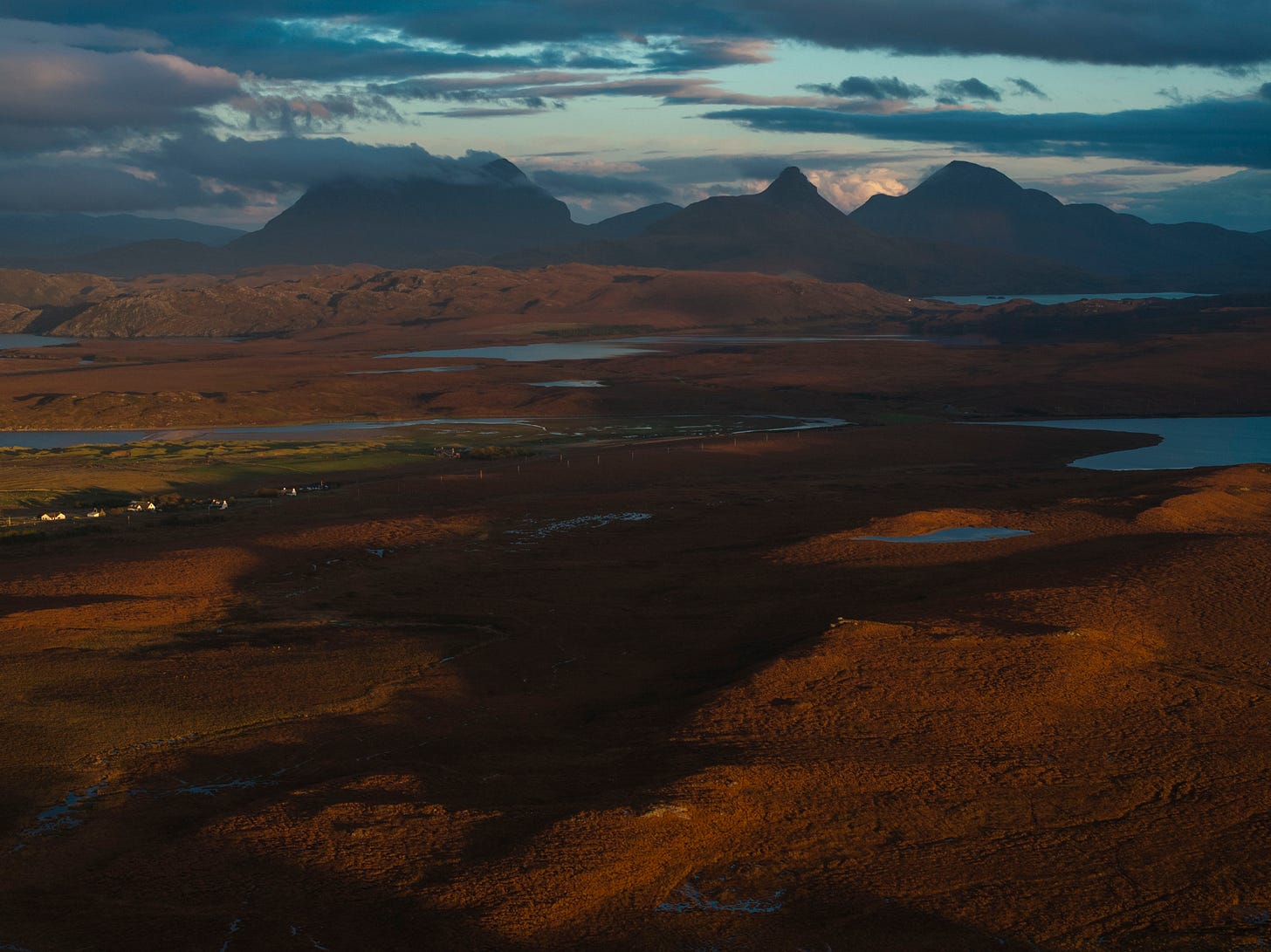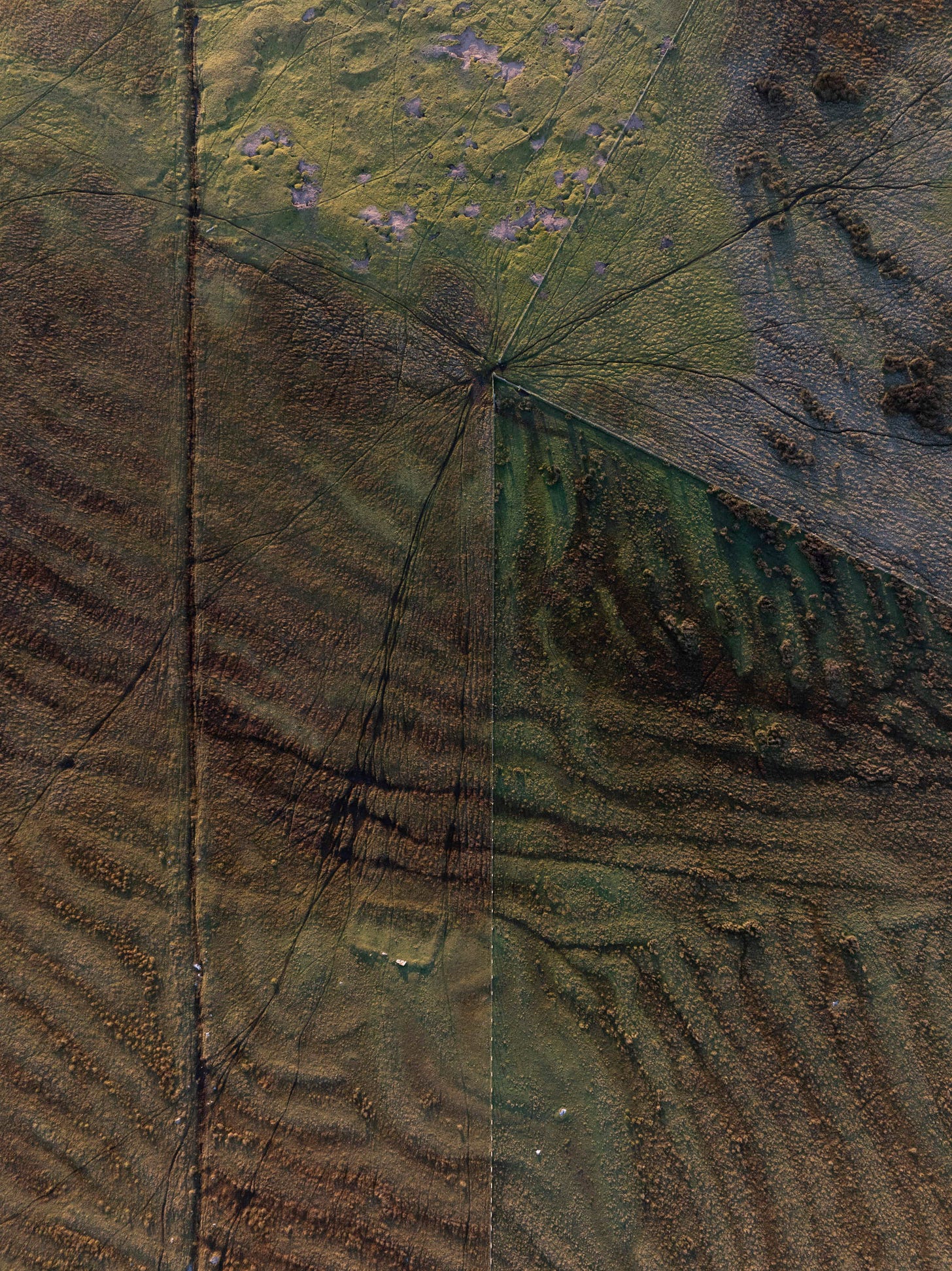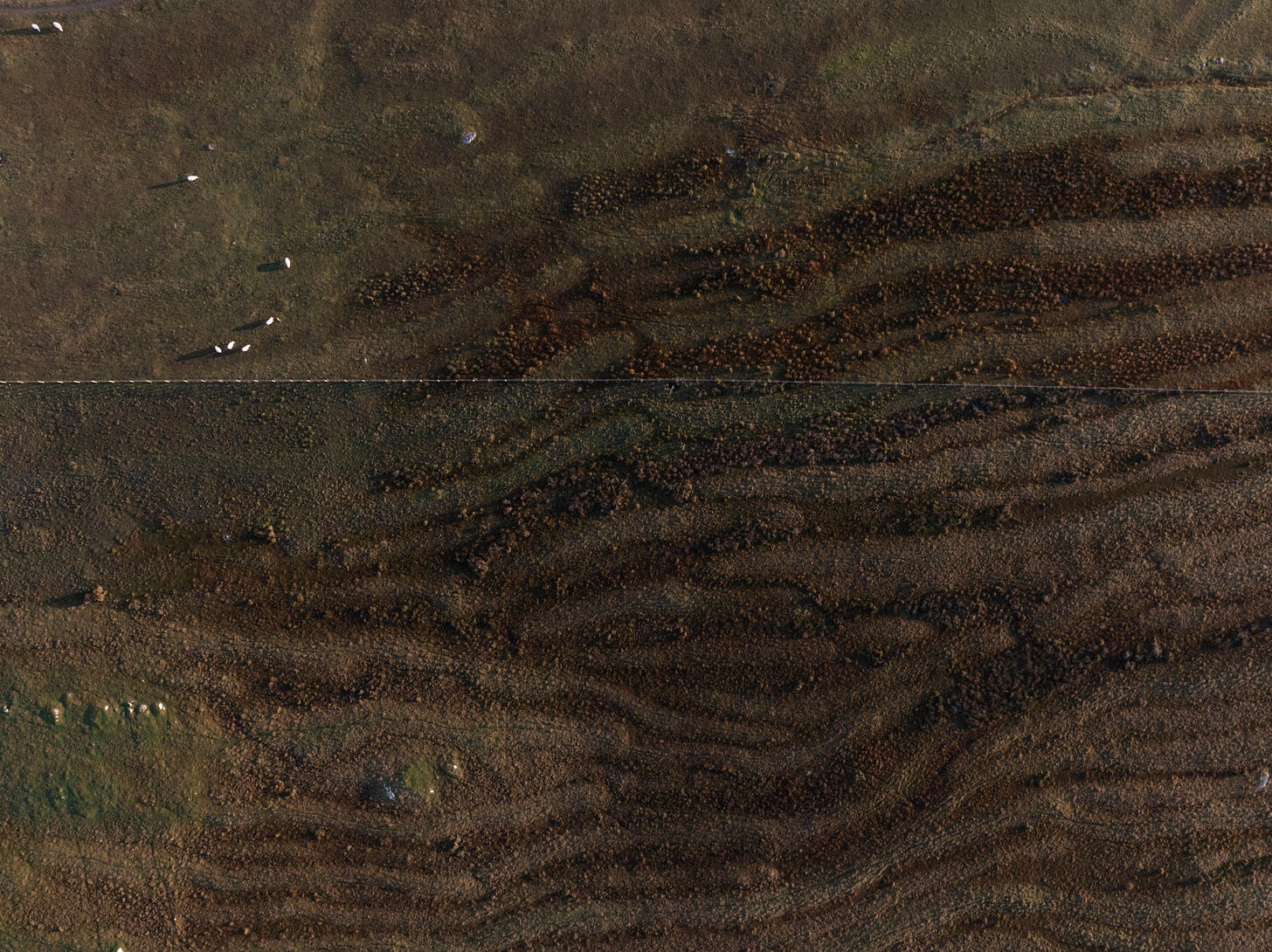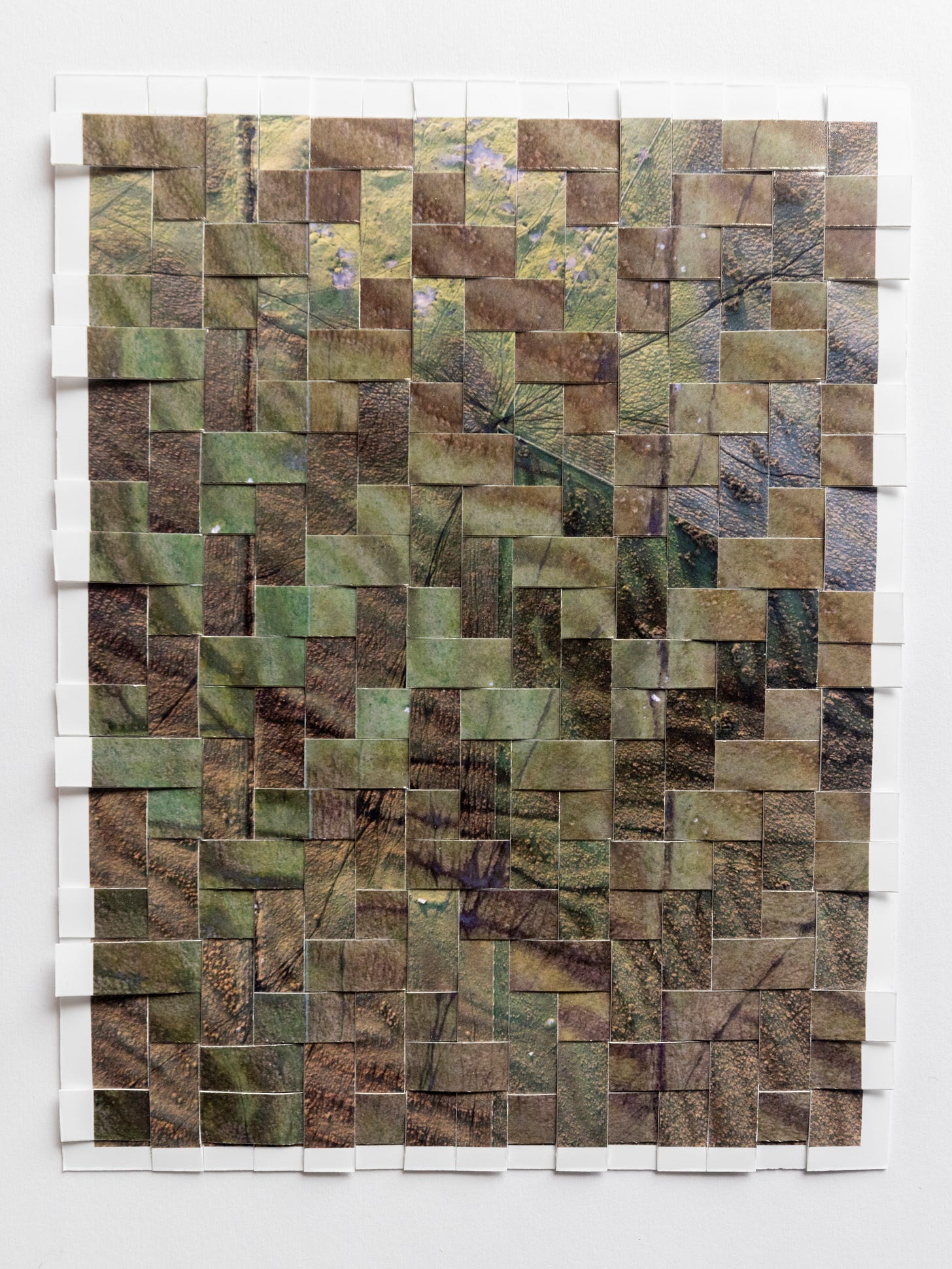3. Resistance
Strong Women and Lazy Beds
Fabricated Land is an ongoing body of work composed of photoweaves of abstract aerial imagery. Each weave tells hidden stories of the past’s influence on the present. This month, I am sharing and discussing my ideas around new images from the series.
The land of Coigach and Assynt along the wild Atlantic coast was once connected to North America and resembles an alien landscape. Indeed, scenes of the witch planet Dathomir were filmed here for the climax of the Star Wars series Ahsoka.
The place has a reputation for fearsome women dating back a long, long time ago in a crofting community far, far away. In 1852, twenty policemen were beaten and stripped naked by local women resisting arrest. In other Highland glens, women were at the forefront of protest against the Clearances, but Coigach was one of the few communities to successfully resist eviction. More police came soon after but failed again, so the landowner eventually gave up trying to clear tenants off the land.
Famine
The harshness of the land may account for the toughness of its inhabitants, but the immediate context was Scotland’s potato famine, often overshadowed by the vast scale of Ireland’s Great Famine, during which 1 million people died and another million were forced to move away. Scotland’s west coast experienced the brunt of the Gaiseadh a’ bhuntàta, or Highland Potato Famine, in the decade from 1846 onwards, but fewer than 200,000 people were affected. A better response from central institutions (including the newly formed Free Church) made the events less devastating compared to in Ireland the year before. Still, between 5 to 15 per cent (and 25 per cent in Aberdeenshire) of local populations died of starvation.
In this context, it is understandable why the strong women of Coigach in 1852, having endured so much, did not want to leave. It also explains why landowners, unable to raise rent from famine-stricken tenants, wanted people off their land. This era marked the brutal tail end of the Scottish Clearances.
Memorial
This past autumn, on holiday in the area, I became obsessed with a particular field inland from a shifting dune system where a fishing community once thrived. The aerial drone is my primary camera for landscapes. I wanted to revisit the site and called the Ministry of Defence to get clearance to fly my drone as a large training exercise was ongoing at the time. They were very amiable even if they couldn’t spell Achiltibuie when I pronounced it (Ach-ill-tea-boo-e).
At sunrise or sunset, as shadows lengthen, long parallel ridges appear on unpromising scraps of land. These lazy beds – long ridges of raised soil – were formed for potato cropping, to promote drainage and keep the crop warmer.
Two centuries later, you can still see the imprints of lazy beds across the West of Scotland on isolated hillsides. They are a lasting memorial to the communities who laughed, toiled and worshipped in this landscape before disease or economics drove them away.
Lazy Beds (Fishbones), 2025
Photographic print on paper, hand-cut and woven
8.5 x 6.5 inches
A first quick sketch of possibilities ahead. I think there is a lot to be done experimenting with the ridge lines given that tweed fabrics are themselves resemble these patterns. Here I used the Fishbones pattern, my take on the classic Herringbone. For this historic seafaring community that seemed like an apt start. I will work on more studies when time allows.







Those women weren't to be messed with. My husband's great great grandmother was one of them.
I had heard of the strong women of Coigach but not of Lazy Beds. Fascinating insight from Kieran, and a great weave concept!